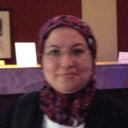Mandibuloacral dysplasia: a report of two Egyptian cases.
Maneno muhimu
Kikemikali
Mandibuloacral dysplasia (MAD) is a rare disorder. Only 35 patients, coming from 22 families, have been reported worldwide. We report on two Egyptian unrelated girls with MAD. The first patient presented at the age of 5 years with acral defect and partial alopecia. The second patient presented at the age of 17 years with progressive micrognathia and loss of subcutaneous fat from the limbs. Physical examination detected the craniofacial, skeletal and cutaneous changes characteristic of MAD. Both patients were short with progeroid facies and loss of subcutaneous fat from the extremities, which fits lipodystrophy type A pattern. Radiological examination revealed delayed closure of cranial sutures, hypoplastic mandible, hypoplastic clavicles, and acroosteolysis. Both patients had normal glucose tolerance, but had fasting and post-prandial hyperinsulinemia, suggestive of insulin resistance. One patient had elevated serum triglycerides and low normal cholesterol levels, while the other patient had normal levels. Serum leptin was normal in both patients. We review the literature on mandibuloacral dysplasia and discuss the differential diagnosis.


